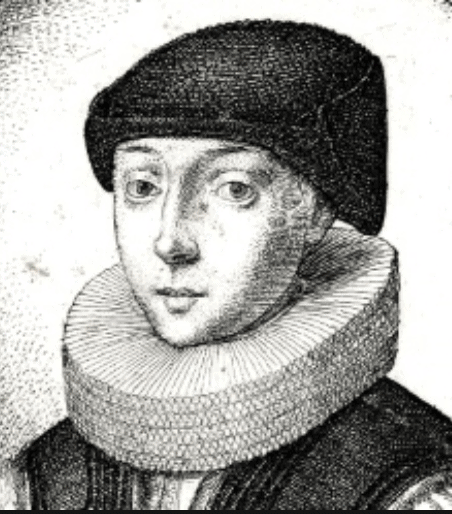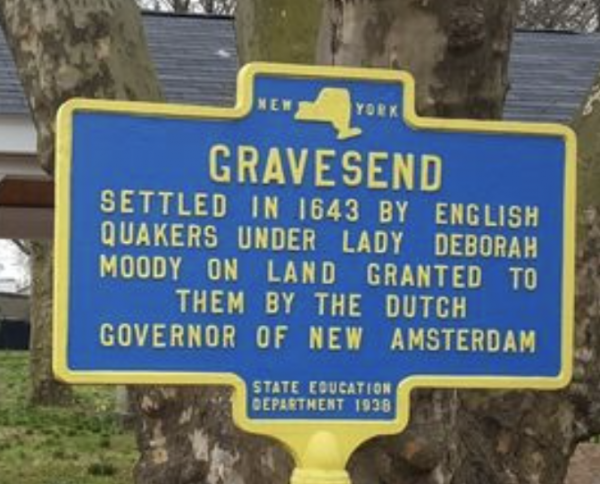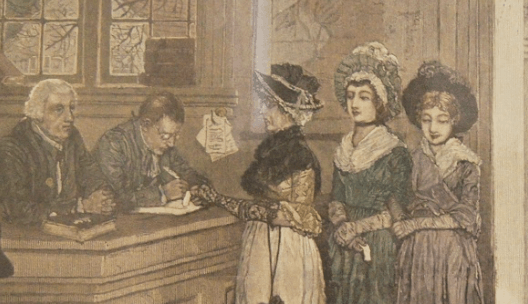An important event is on the horizon. Yes, we are becoming fully engaged in this voting season, but we also look forward to the centennial of the Nineteenth Amendment on August 18, 1920. Understanding why it took 144 years to get to this point is difficult considering that the country’s founders professed ideas of equality. Even then it took 92 years to enfranchise non-white men and some were still excluded. As we are all aware, efforts to exclude some citizens from voting continue today.
The failure of the country to enfranchise women, however, does not mean that women never voted earlier. Many states had granted women the vote before the Nineteenth Amendment enshrined that right in the constitution. Some women even voted in colonial days. It is widely believed that Lady Deborah Moody was the first woman to vote in the colonies.
Lady Deborah Moody

When Lady Deborah Moody sailed from England for the colonies in 1639, she was a widow, probably about 43 years old. She, her son, and a small group of Anabaptists set out in search of religious freedom. Unfortunately, they wound up in Saugus, Massachusetts, a Puritan stronghold that did not welcome Anabaptists any more warmly than England had.
Lady Moody not only held beliefs that were in conflict with the Puritans’ strict doctrine, but she did not hesitate to express them openly. She was admonished and labeled a “dangerous woman.”

Lady Moody then re-organized and headed a party that moved to a section of Long Island in the Dutch Colony of New Netherland. She persuaded the governor to cede to her a sizable portion of land and became the First Women in the New World to receive a land patent. She was also the First Woman to write a town charter in English in New Amsterdam. The town was christened Gravesend and is located in Brooklyn today. There is apparently no record of Lady Moody voting, but the assumption made by historians is that Lady Moody, a woman of wealth and determination, who created her own town charter, would certainly have given herself the right to vote.
Lydia Taft
The first official record of a woman voting was in the colonies in the 1700’s, one hundred and sixty-four years before the states finally extended this right for all women in the Constitution. When Lydia Taft’s son and husband died, she became a significant landholder in Uxbridge, Massachusetts Colony. She was also, as her husband had been, the largest taxpayer in town. When the town fathers wished to increase their appropriation for the French and Indian War, the support of the Taft household was critical, so Lydia was allowed to vote. She did not vote in her own right, however, but was granted a proxy for her husband—even though he was dead.
As the colonies coalesced women had the right to vote in New York, Massachusetts and New Hampshire. As the United States was formed, women lost the right to vote in each of those states. When the Constitutional Convention was held in 1787, the right to decide qualifications for voters was given to the states and only New Jersey permitted women to vote. Before one celebrates, however, New Jersey rescinded that privilege for women twenty years later.
Forming the Country
When the country was being formed, Abigail Adams wrote to her husband John Adams, who would become the second President of the United States,
“Remember the Ladies, and be more generous and favourable to them than your ancestors. Do not put such unlimited power into the hands of the Husbands. Remember all Men would be tyrants if they could. If particular care and attention is not paid to the Ladies we are determined to foment a Rebellion, and will not hold ourselves bound by any Laws in which we have no voice, or Representation.”
Apparently her words fell on deaf ears, but she was correct that women would later rebel and fight for the vote.

